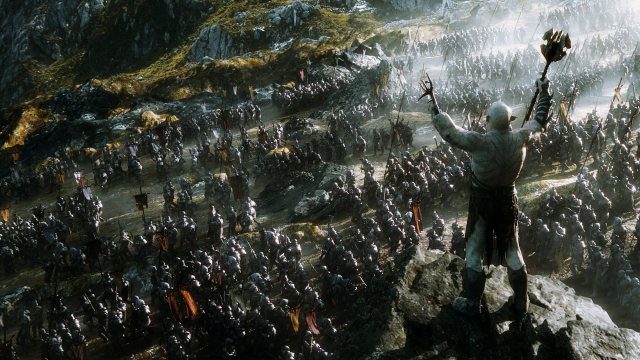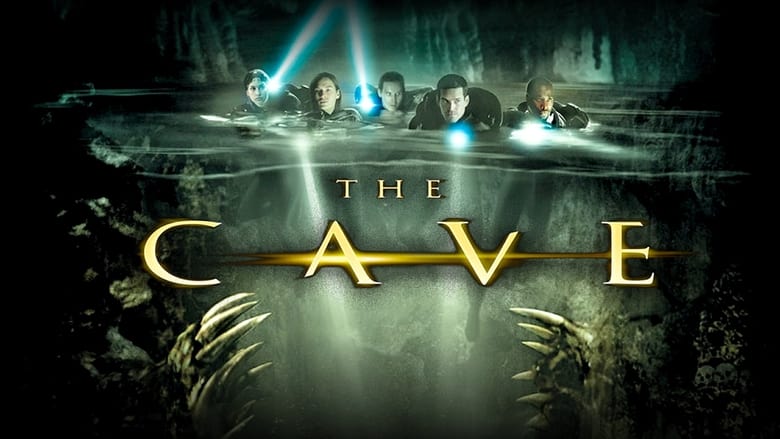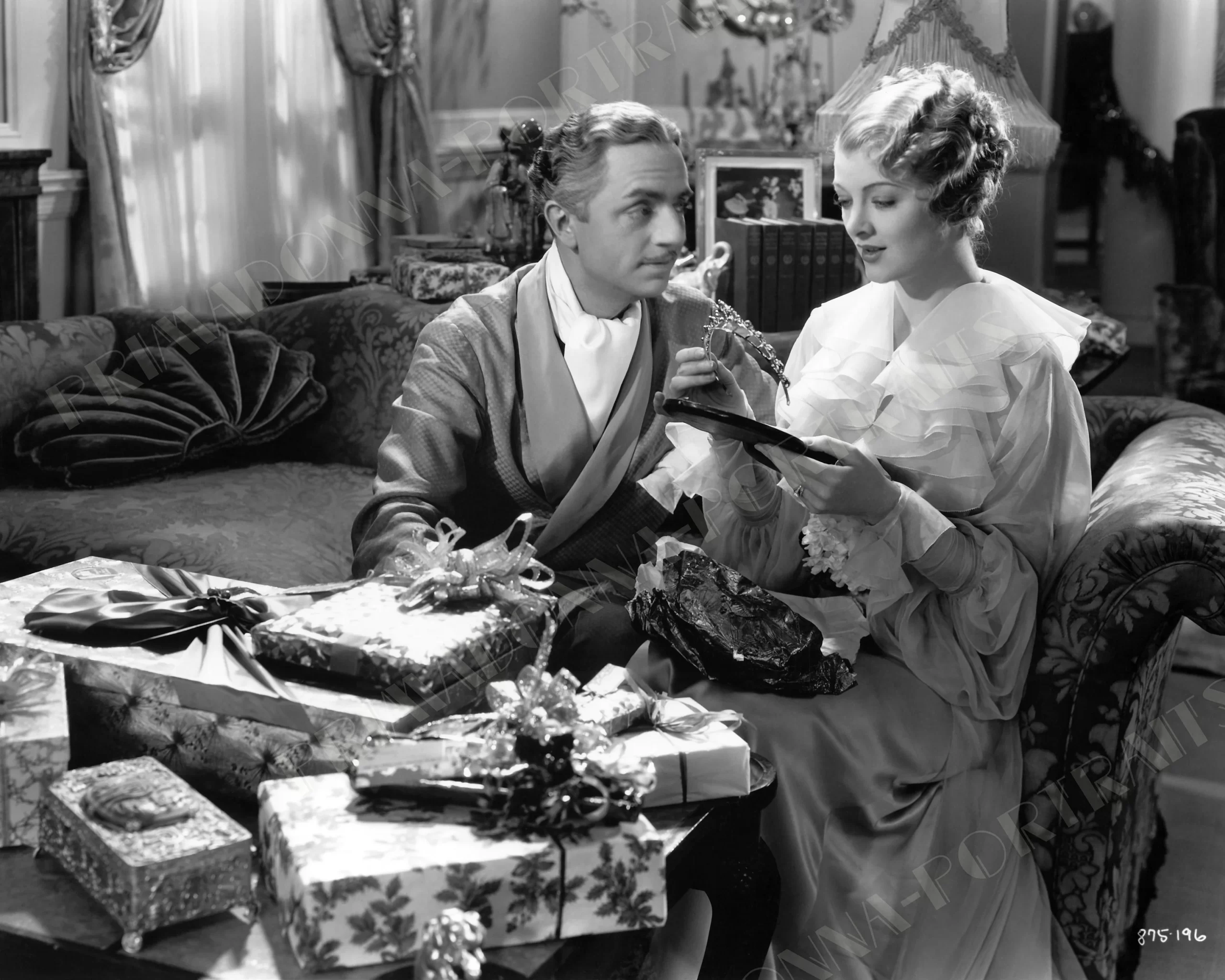It’s hard to figure out what Peter Jackson is going for with his Hobbit trilogy. There are abundant themes like friendship and sacrifice, but those were both better explored in the original Lord of the Rings films. It’s easy to be cynical; it’s well-known that Jackson is only involved in the films because of a contractual obligation, and he’s only directing them because Guillermo del Toro dropped out, because dropping out of films is what del Toro does (see: Frankenstein, Haunted Mansion, Beauty & the Beast, At the Mountains of Madness, and Slaughterhouse-Five). There are other things working against the Hobbit films, namely franchise fatigue (in behind-the-scenes videos, Jackson looks exhausted). Plus, Martin Freeman won’t stop flipping off the camera, and Ian McKellan was reportedly driven to tears by having to do such an insane amount of green screen acting.
So why does The Hobbit: The Battle of the Five Armies work? It helps that the cast gives their all – especially Freeman and Richard Armitage, reliably great as Bilbo and Thorin, respectively – and that Jackson (and his co-screenwriters Philippa Boyens, Fran Walsh, and del Toro) knows this land and its rules better than anyone, save for maybe Tolkien and Stephen Colbert. Five Armies is probably the strangest – and shortest, at 144 minutes – entry in what’s now a sextology of films that already skew toward weirdness, and it’s important to remember that this, and the other Hobbit films, is less of an adaptation than it is an interpretation.
The first third of Five Armies is a long held breath, an extended calm before the storm as Jackson builds up to the titular melee. Loose ends from Desolation of Smaug (the best of the Hobbit films) are tied up, new conflicts are introduced, and all the pieces are arranged on the board, which is a pretty apt analogy, because Five Armies proves that more than anything, at the end of this trilogy Jackson just wants to play with his toys. It also proves that he’s really fucking good at it. Keep in mind, the battle of Helm’s Deep (from The Two Towers) is the high-water mark for these types of siege battles, so the thought of a 45-minute battle scene directed by the same guy should be pretty exciting.
The battle – which we’ll get to in a bit – absolutely delivers, and that’s due in no small part to the increased weight given to characters’ lives. When a dwarf dies, you’re taken aback. When a second dies, you’re more than a little saddened, and also increasingly wary of who else will bite the dust. The deaths feel earned, and it’s to the film’s credit that it actually kills off people with lines. Dwarves like Dori, Nori, Ori, Bifur, Bofur, Oin, and Gloin remain nonentities (Bombur is something of a standout for two reasons: as the fattest dwarf with the funniest beard, he’s easily recognizable, and in three films he didn’t get a single line of dialogue). One wonders why they were included at all; if Jackson is going to straight-up invent characters like Tauriel (Evangeline Lilly) and the Necromancer (voiced by Benedict Cumberbatch), how much does he really care about adherence to Tolkien’s source material?
The cast is buoyed by solid supporting turns from the likes of Lee Pace, Luke Evans, and a game Orlando Bloom, who once again gets a killer fight scene.
Jackson is smart to cut between the huge battle to two smaller-scale fights: Thorin vs. Azog, and Legolas vs. Bolg. While Legolas might get the “cooler” fight scene, they’re both impactful, partly because Jackson has done such a good job of making his orcs genuinely monstrous. The sorties between the orcs and the good guys are brutal, sometimes graceless affairs; the fight between Thorin and Azog in particular is fraught with frustration, defeat, and triumph, not to mention violence that at times is hard to watch. While Thorin’s stature tends to get lost in the amount of close shots (at times he and Azog look to be about the same size, even though there’s about a four-foot height difference), the fight still works, probably because Azog is played by Manu Bennett (better known as Arrow‘s Deathstroke), who can always be counted on for some good old fashioned brutality.
For the most part, Five Armies works, which is why I’m recommending it. It’s a good end to a trilogy whose director never wanted to make it – for all the bitching people have been doing about The Hobbit, what are the odds that these movies would actually turn out as good as they did? Howard Shore’s score and Andrew Lesnie’s cinematography remain as crucial a part of Middle Earth as elves or orcs, and Jackson’s newfound love of green screen can’t cancel out the amazing costumes, makeup, or props.
The Hobbit was always going to be adapted into a film, there was never any getting around that. Three films might be a stretch for Jackson – and with each film shorter than the last, it shows – but he manages to make his new trilogy seem like more than a cash grab. While the Hobbit films will never surpass LOTR, there are still moments of genuine beauty to be found here, and more than a few classic scenes (such as the “riddles in the dark” scene with Bilbo and Gollum in An Unexpected Journey, and the barrel scene in Desolation of Smaug). At the end of the day, Jackson can direct this shit in his sleep – but luckily for us, he didn’t.





